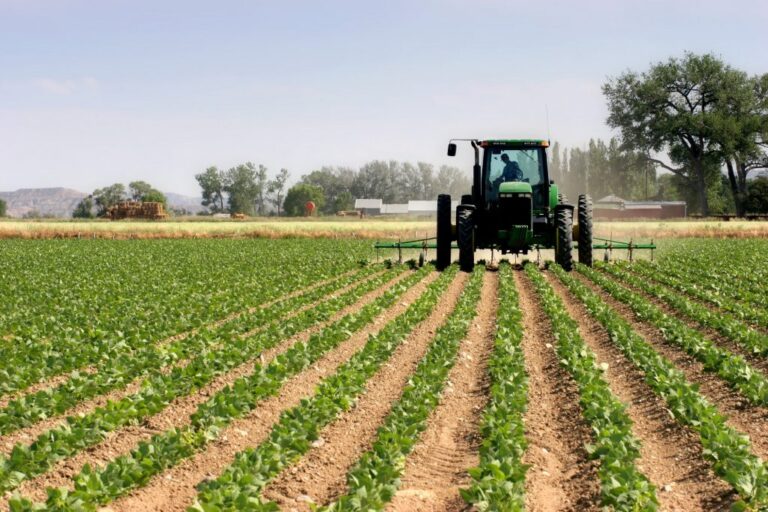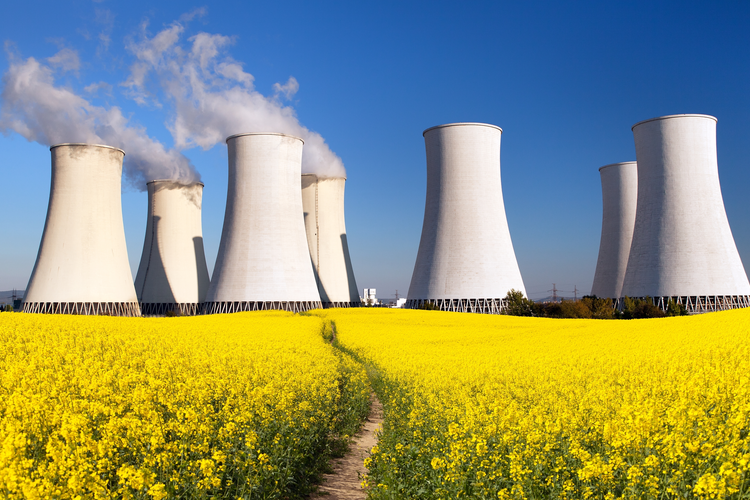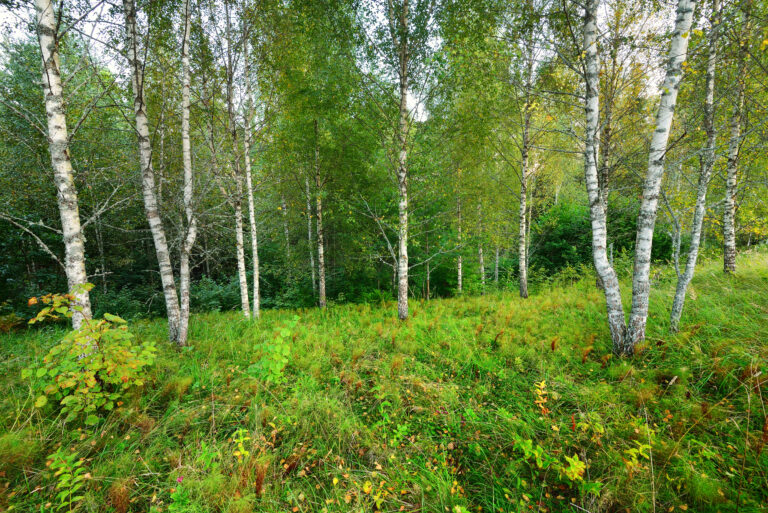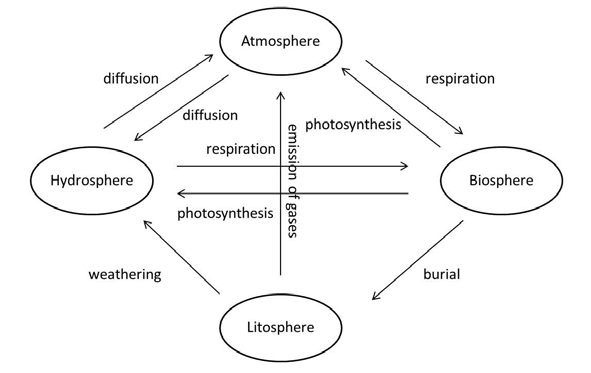The Importance of Trees to Mankind | Types of Trees | Why Trees Are So Important
What are Trees
In botany, a tree is a perennial plant having an extended stem, or trunk, that in most species supports branches and leaves.
In other contexts, the term “tree” may be limited, referring primarily to wood plants with secondary development, plants suitable for timber production, or plants above a specified height.
In a broader sense, higher palms, tree ferns, bananas, and bamboos are also considered trees.
Trees are not a taxonomic group, but rather a collection of plant species that have evolved a trunk and branches on their own in order to tower above other plants in the competition for sunlight.
Trees have a lengthy lifespan, with some reaching several thousand years. Trees have existed for about 370 million years. Globally, it is believed that there are approximately three trillion mature trees.
Typically, a tree’s trunk supports numerous secondary branches that extend above the ground. This trunk often has both woody and vascular tissue to provide strength and to transport materials from one section of the tree to another.
The majority of trees, it is enclosed by a protective layer of bark. The roots branch and spread widely beneath the earth; they serve to anchor the tree and extract moisture and nutrients from the soil.
The branches above the ground are divided into smaller branches and shoots. Typically, the shoots have leaves that absorb light energy and convert it to sugars via photosynthesis, giving the tree nourishment for growth and development.
Typically, trees reproduce via seeds. While flowers and fruit are sometimes present, certain trees, particularly conifers, have pollen cones and seed cones. While palms, bananas, and bamboos produce seeds as well, tree ferns create spores.
Types of Trees
Some trees are familiar and easily recognizable, but there are an amazing variety of types across the globe. Over 60,000 tree species exist, ranging in size and shape from stately cedars to smaller fruit trees and bushes.
Generally, identifying distinct types of trees requires an examination of their leaves and bark. Some trees have broad oval leaves, some have star-shaped leaves, while many evergreens have needle-shaped leaves.
All tree species are divided into two distinct groups: deciduous trees and evergreen trees. Deciduous trees lose their leaves at a specific period of the year – typically in the autumn – whereas evergreen trees retain their foliage all year.
Trees are perennial woody plants that belong to the kingdom Plantae. All tree species are classified according to their genus, family, and order. This assists in the identification and study of trees.
Benefits of Trees: Why Trees Are So Important
Trees are of priceless importance to our environment and to human wellbeing. They give us water to drink, air to breathe, color, and food to people, animals, and plants.
They offer habitats for several species of fauna and flowers, firewood for cooking and warmth, materials for homes and places of spiritual, cultural, and recreational importance.
Trees are so crucial for the global surroundings and the health of the species that live there, and that they want our unconditional care and safety.
The destiny of all lifestyles on our planet is intertwined with the survival of our tree population. Without timber to regulate and hold the environment, there might be no life on Earth.
Uses for Trees
- Trees are used as food. Plants are not only good food but also used as food, in medicine, and in clothes. Some plants can be made into tea to drink, like herbal tea. Some plants are used to make medicine like some kinds of berries. Some trees have strong wood that is perfect for building houses and making tables and chairs.
- Trees are used as shade. Trees shade the ground with their leaves. Trees are used to make homes, furniture, and shade.
- Trees are used as a home for birds and animals. Some birds build nests in trees to raise their babies in.
- Trees help keep soil from eroding away by holding the soil together with its roots and trunks that grow into the ground.
- Trees can be used for firewood.
- Trees save us wood by keeping the ground from being flooded with water during heavy rain or when the snow melts in the spring and summer.
- Trees save us wood by helping to make the soil fertile so that plants can grow healthy without a lot of fertilizers and pesticides (both of which are made from trees).
- Trees help block the wind, so we can also keep the rooms that we live in cool in summer.
- Trees help us produce oxygen for us to breathe by keeping the air fresh when a fire burns.
- Trees help keep us cool during hot weather by keeping our homes cool during summer which is a time when people really need it, to stay healthy.
- Trees help animals stay cool during hot weather as well.
- Trees may also be used to give us shade for our homes.
- Some trees are used to make buildings, like the wood from the oak tree or one of the cedar trees in your neighborhood or maybe even a house you live in.
- Wood can be used for building furniture or other things.
- Some trees are also used as firewood.
- The wood from some types of trees can be used to make tools, like axes and saws to cut down the trees.
- For culinary purposes, Spices are made from a variety of tree parts. These include cinnamon, which is derived from the cinnamon tree’s bark, and allspice, which is made from the dried tiny fruits of the pimento tree.
- Numerous trees have nectar-rich blooms that attract bees. Forest honey production is a significant industry in rural areas of developing countries, where it is carried out by small-scale beekeepers using conventional methods.
- Tree timber is used in joinery to construct houses to create joists, roof trusses, roofing shingles, thatching, stairs, doors, window frames, floorboards, parquet flooring, paneling, and cladding.
- Apart from influencing artists throughout history, trees have been used to create artwork. Bonsai and tree shaping have both been utilized on living trees, and both living and dead species have been sculpted into occasionally spectacular shapes.
- Like other landscape features, trees have a visual impact and lend a sense of age and permanence to a park or garden. They are grown for their form, foliage, blooms, fruit, and bark, and their placement is critical in creating a landscape.
- Trees are frequently planted in urban areas, where they are referred to as street trees or amenity trees. They can provide shade and cooling via evapotranspiration, absorb greenhouse gases and pollutants, intercept rainfall, and mitigate flooding danger.
- Scientific research demonstrates that street trees help communities become more sustainable and improve inhabitants’ physical and mental well-being. They have been demonstrated to benefit humans by increasing their sense of well-being and reducing stress.
Why Trees Are So Important; Importance of Trees
Habitat for insects, birds, and other wildlife
Trees provide a haven for insects, birds, and other wildlife: Numerous insects, birds, lizards, and other species spend their entire lives in trees.
Birds are a good example of an animal that breeds and nests in trees. Other animals include squirrels and deer mice (which store food in trees), ants and termites, trees and frog beetles (which reside beneath the bark of snags), and chickadees, who nest in woodpecker-created cavities.
Trees provide habitats for birds and other animals like rodents, bats, lizards, spiders, insects, and fish rely on birds’ nests to raise their young. Trees add beauty to the landscape by providing homes for these animals.
Trees combat climate change
Trees provide a high canopy cover in which the leaves can absorb and retain carbon dioxide (CO2). This CO2 absorbed by the tree will stay in its roots, trunk, branches, and even stumps. When trees die, their decomposition releases this CO2 into the atmosphere—a carbon sink.
Trees produce oxygen
Trees help maintain a balance of oxygen for all living things: It has been estimated that 3200 billion tons of carbon enter our atmosphere as CO2 each year.
Every tree breathes in and out oxygen. As the trees take in oxygen, they need to give off carbon dioxide for other plants to breathe. Trees also help provide shelter for animals and insects — thus reducing predation with cats, dogs, and other animals.
By photosynthesis, trees produce oxygen (O2): Trees are the primary source of oxygen for humans and other animals.
The process of photosynthesis involves the movement of electrons from the ground up into leaves, where the plant uses carbon dioxide to make food.
When trees die, this carbon dioxide (CO2) is given off as a waste product. This loss reduces oxygen production in forests by 30% and can cause hypoxia.
Trees Are a Source of Food
Trees provide an abundance of food: Crop yields increase by up to 20% due to trees.
Trees prevent soil erosion
Soil erosion occurs when the top layers of soil are carried away by water, wind, or ice. Erosion caused by water or wind can cause damage to estuaries and beaches.
Tree roots help to hold the soil in place so that it doesn’t get carried away. By allowing roots to penetrate deeper into the ground increases the stability of the trees themselves and prevents flooding from occurring during heavy rains.
Trees add aesthetic beauty to homes.
Trees provide aesthetic beauty to homes: Trees provide homes for wildlife and add beauty and value in the way they are shaped. The shape of a tree’s crown can make us feel closer to God.
Other examples of trees that add aesthetic value include their ability to bend in the wind (which helps prevent damage).
Evergreen trees also help prevent desertification of arid lands by providing shade and water flow during droughts.
Trees enrich and restore soil
Trees absorb and hold rainfall water: Trees can function as natural reservoirs for degraded soil because they are not damaged by prolonged droughts or excess rainfall.
Trees store water during periods of drought, allowing them to survive dry spells. By adding their unique structures to the land, trees provide a habitat for bacteria which causes increases in nitrogen in the soil.
Trees benefit health
Trees provide clean air and improve health: Pollution is a cause of global climate change. Prolonged exposure to polluted air can cause serious damage to the lungs and respiratory system.
Trees help prevent pollution by absorbing carbon monoxide (CO) and nitrogen dioxide (NO) released into the atmosphere from automobiles, factories, wood-burning stoves, and other operations.
As a result, trees reduce the risks of lung cancer and other health problems.
Trees reduce energy costs
Trees reduce energy costs: It is estimated that trees can save up to 10% on air conditioning and heating costs.
Trees help crops grow by improving soil quality
Trees to help crops grow by improving soil quality: Trees can also help control erosion and sedimentation, which reduces flooding and improves water supply for drinking, agriculture, industry, etc…
Trees boost wildlife
Trees boost wildlife: Forests are home to many species, and parts of the United States have protected areas for endangered species.
Trees provide water and food for animals, humans, and livestock
Trees provide water & food for animals, humans, and livestock: Trees provide homes for animals such as deer mice (which store food in trees), squirrels, frogs, snakes, and more. Trees also provide fruit (which is a good source of nourishment).
Trees are an Essential Source of Medicine
Trees are an Essential Source of Medicine: Trees, and other plants, are a source of medicine for humans. For example, the bark of the mulberry tree contains a natural antibiotic that can be used to treat wounds.
The softwood of the American larch tree is used to make paper and pulp, which is used in making telephone books and banknotes. The outer bark of the birch tree can be used as an effective treatment for burns.
Trees create economic opportunities.
Trees create economic opportunities: There are hundreds of thousands of uses for trees in the US alone.
Trees improve property values
Trees improve property values: A study carried out in North Carolina found that if a forest were removed and replaced by a similar-sized tree farm, its assessed value would increase by about $57,000 per acre.
Trees reduce wildfire risk
Trees reduce wildfire risk: Fire can cause damage by releasing CO2 and water into the air, thereby reducing the oxygen supplies to living things. Trees prevent fires from spreading by preventing overgrown grass and brush from becoming fuel.
Whenever there is a fire, the fire department must first extinguish the fire. Once the fire is out, these trees provide a much more secure habitat for living things (such as deer, foxes, birds).
Trees reduce crime rates.
Trees reduce crime rates: Crime can be controlled by planting trees alongside communities and blocking empty or at-risk areas with street trees.
Trees help purify the water supply
Trees help purify the water supply: Trees (particularly oak trees) add calcium to the soil, which is necessary for filtering and purifying water supplies.
Trees encourage biodiversity
Trees encourage biodiversity: The number of species present within a forest is called its diversity. A diverse environment ensures that all species will have sufficient resources to survive.
Trees help prevent erosion by providing natural protection during storms and flooding
Trees provide natural protection during storms and flooding: Forests can grow freely, including in the United States, where they are protected by law against pollution, exploitation, and other alterations that would reduce their size or quality.
One of the most critical advantages for human health that trees can offer is the interception and elimination of air pollution.
Air pollution is linked to bronchitic signs and symptoms, intraocular pressure, myocardial infarction, adjustments in autonomic and micro‐vascular characteristics, autism, blood strain, cognitive improvement issues in youngsters’ blood mitochondrial abundance, coronary heart failure, and mortality in human beings. Trees take away a large amount of air pollution.
It is anticipated that from the cities in the United States, urban bushes cast off 711,000 metric lots of air pollution each yr (Nowak et al., 2006).
Having more trees, particularly the right mature species planted in the proper places, can reduce particulate depend and different sorts of air pollution, which could lessen mortality and morbidity in our urban centers.
Beyond pollution elimination, the presence of trees affords additional direct and indirect benefits to human fitness and wellbeing.
Regardless of why bushes provide such a lot of advantages, the presence of trees and inexperienced space promotes well‐being. Trees and greener environments are strongly linked to decreased terrible mind, reduced signs of despair, higher said moods, and multiplied lifestyles pleasure.
A view of green trees can assist sufferers get better in a hospital and decrease diastolic blood stress and strain in research contributors.
Residents of tree‐covered communities feel healthier and have fewer aerobic‐metabolic situations than their opposite numbers.
The presence of trees may even improve the circumstance of humans with a neurodegenerative disorder. In addition, as human beings price trees and herbal environments, they prefer being around them and viewing them.
The presence of trees and inexperienced areas can also inspire bodily activity that’s associated with physical and intellectual health.
Given the multi‐faceted health benefits of the surroundings provider ecotherapy, the very act of planting and worrying for bushes can also sell mental and physical health. Trees not only make people happier and healthier, however, they make communities more livable.
Well‐maintained trees are associated with enhancing the social capital and ecology of a network, decreasing violence, and aggression in households, and limiting crook hobby in neighborhoods. I
Importance of Trees for Social impact & Ecosystem
Trees make a contribution to a rich healthy environment. Animals, bugs, birds, and fungi make their homes on the trees and make a numerous atmosphere. These balanced surroundings, in flip, contributes to the betterment of humans.
Trees produce their own food and are located at the lowest of the food chain. They produce their very own meals thru a manner referred to as photosynthesis and make a contribution drastically to the whole atmosphere.
Further, trees are a rich supply of medicines that are used to heal our sicknesses in a natural manner as completed Ayurveda
Also, arborists, loggers, and researchers get employment opportunities in tress-related fields. We don’t simply depend upon trees for work, although. Sustainable tree farming gives wooden to build homes and shelters, and wood to burn for cooking and heating.
Food-generating trees provide fruit, nuts, berries, and leaves for consumption by means of each human being and animal, and percent an effective nutritional punch.
Importance of Trees for Economy and resources
Trees provide many ecosystem benefits to the environment and urban cities ranging from reducing electricity use and putting off pollution to growing belongings values, developing the neighborhood economic system, and helping tourism.
In the USA alone, it’s far expected that timber provides $18.4 billion in annual price because of air pollution removal, reduced building power use, carbon sequestration, and avoided pollutant emissions (Nowak & Greenfield, 2018).
Allocating sources in tree planting can be a fiscally sound decision based totally on the benefits and ecosystem services that trees offer. This excessive go back on investment can be multiples of invested capital through the years. Many benefits aren’t absolutely captured on this return on investment.
In addition, the presence of coloration timber can reduce the price of growing older of street and pavement surfaces, have an impact on consumers to visit a purchasing location, and boom the selling price of a domestic.
As lengthy as trees do not block the view of an office building, first-rate landscaping with nicely maintained bushes can boom condo quotes. A properly planted tree can also lessen electricity use, which could reduce the price of energy bills.
While urban trees can offer economic advantages, they also can offer resources, including meals, to a community. In reality, agroforestry became previously recognized as a way to satisfy the United Nations Millennium Development Goals.
Hundreds of tree species are used for agroforestry to promote food sustainability and dietary protection.
Urban orchards, or city food forestry, can be an efficient way to always offer loose or low‐value nutrient‐dense food to the people that need it. Urban road bushes can offer many assets to the inhabitants of cities.
Finally, tress is a critical supply of material and energy for a great deal of the world. Trees which can be reduced down in cities or communities may be used for wooden.
This may be used for fuel or for generating goods. Innovative programs can promote sustainability and creative usage of urban wooden.
An example of this is the “Working for Water” program which trains humans in South Africa to do away with woody invasive species, and then the cleared wooden can be used for a selection of secondary industries.
While this program works with invasive species, it serves as an example of innovative solutions regarding the community with urban problems related to trees. Urban forests can also help deliver inexpensive power to people that need it.
It is critical to note, that burning wood is a massive contributor to air pollution in city environments. Therefore, if trees are used for gas, it has to be burned in such a manner that the blessings outweigh the damage to human health. Trees are a valuable resource, even after they’re reduced down.
Importance of Trees for Climate change mitigation and habitat
Climate change impacts are now felt by everyone. One of the main pressing risks for human beings related to changing weather because of the increase in heat‐associated deaths, illnesses, and infectious illnesses.
The growth in warmness and warmth‐associated health problems is specifically usual in towns, wherein the Urban Heat Island Effect increases the effect of warmth waves. Properly positioned trees can mitigate temperatures in built environments.
Not only that, trees provide color through intercepting and soaking up the light, however thru evapotranspiration trees actively cool the air of towns.
A study of ninety-four urban areas around the arena indicates that trees have a substantial impact on the temperature, and are accountable for, on average, 9°C of cooling in a town. Trees integrated into the built surroundings can lessen a town’s temperature by 9°C.
This reduction of temperature in most important towns can in the end assist ameliorate the impact of weather change on human health. Trees significantly contribute to city cooling.
One of the important thing ways to restrict the effects of weather exchange is to lessen the amount of carbon released into the ecosystem. Trees are beneficial to storing carbon, which is a first-rate contributor to weather trade.
Although timber isn’t the single solution, wholesome and mature bushes have the capability to make considerable carbon mitigation returns.
Finally, trees, especially mature ones, perform a key role in terrestrial ecosystems. Trees are severely essential, mainly in city areas, as they provide food and habitat for birds, invertebrates, mammals, and flowers. Improving and keeping biodiversity is essential for a sustainable town.
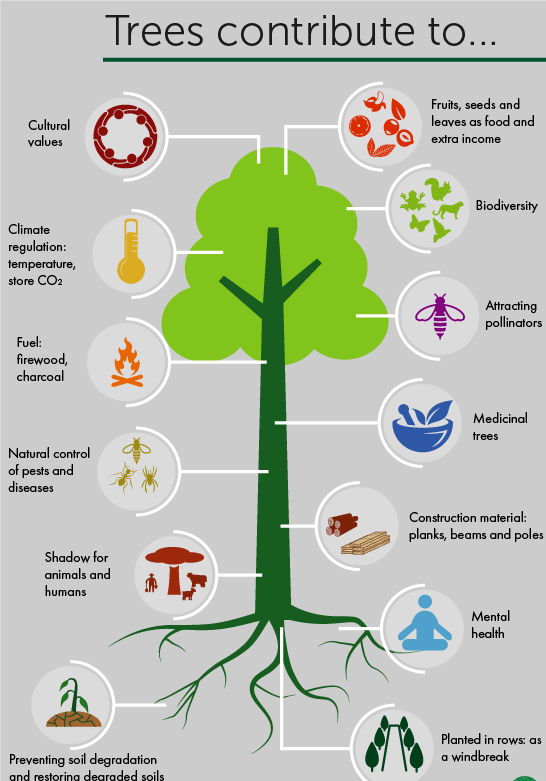
Importance of Trees for Green infrastructure
Trees are taken into consideration “decentralized green infrastructure” and may be important tools for managing water, particularly in an urban environment. Water runoff is a severe problem in the city environment, as runoff can lead to pollution and cause property damage.
Trees can assist lessen and intercept stormwater and enhance the drain of runoff water. With less touch on impervious surfaces, stormwater is cooler and has less pollution when it enters local waterways and water‐related ecosystems.
Green infrastructure protects existence underwater and existence on land, whilst selling sustainability. The capability of trees to lessen the pollution within the waterways is beneficial to human fitness and properly‐being.
Therefore, by means of selling bushes as green infrastructure, the subsequent UN SDG can be met the subsequent Goals:
• Ensure wholesome lives and sell nicely‐being for all at every age;
• Ensure availability and sustainable control of water and sanitation for all;
• Build resilient infrastructure, sell inclusive and sustainable industrialization, and foster innovation;
• Make towns and human settlements inclusive, safe, resilient, and sustainable;
• Ensure sustainable intake and production styles;
• Conserve and sustainably use the oceans, seas, and marine sources for sustainable improvement; and
• Protect, repair, and sell sustainable use of terrestrial ecosystems, sustainably manage forests, combat desertification, and halt and reverse land degradation and halt biodiversity loss
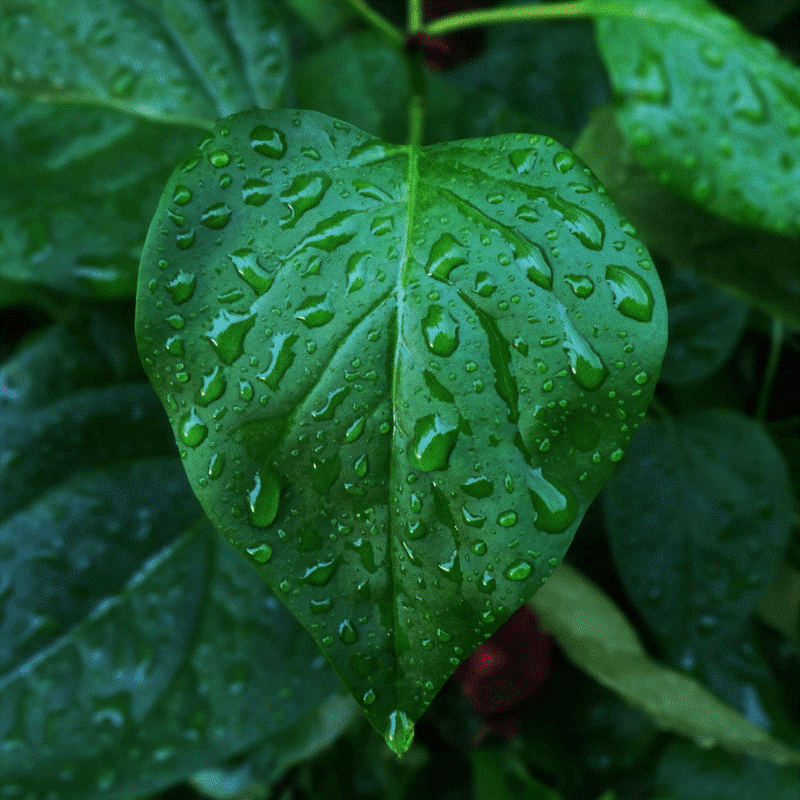
Quotes On Importance of Trees
- “Trees are our most important natural resource.” — Ronald Reagan
- “A tree is a friend who offers shade when we’re weary and enjoyment when our spirits need lifting.” — Duane Elgin
- “I stand in awe of the trees because they do not cling to life, they are not afraid of death; their lives are a delight and an education to them every minute of the day!” — Francis Huxley
- “I like the trees. They’re a friend to me.” — Thomas Edison
- “A tree is a living idea in the world.” — John Ruskin
- “Trees grew where I was born, and taught me to think.” — Emily Dickinson
- “I love trees, for they give me shade; yet I hate a forest, For though I can’t see them there, they’re near enough to hurt me.” — Edna St. Vincent Millay
- “We are interest slaves of the dead. We die daily, and every day we’re buried, and with a sigh we resign our past to oblivion. But the trees live forever.” — W.H. Auden
- “A tree is a good friend that grows up to meet you one day, stays with you all day long, and never tells you how much it loves you till it’s time for you to go home again.” — Hillel
- “I’m fond of trees, because they bear good fruit, and bring joy to mankind.” — Edith Wharton
- “The most important thing in the world is to know how to laugh with others.” — Carl Sandburg
- “Trees were the first to be people on this earth.” — Koko
- “Trees are at once the most living things and the most inert, living when dead, dead when they’re alive. Nothing in nature can compare with a tree. They are life made manifest!” — Thomas Hardy
- “Putting a tree in the wrong place is like putting a man in the wrong time: it makes all the difference.” — Ursula K. Le Guin
- “Nature is a language, can’t you read?” — John Lennon
- “A man who has not been in the forest is not a whole man.” — George Washington Carver
- “It amazes me the trees are so slow to put out the first leaf each season.” — Henry David Thoreau
- “A tree is a man’s best friend, ending up as a funeral monument for the people who love him.” — John Muir
- “If a tree falls in a forest and no one is there to hear it, is it still noise?” — Neil DeGrasse Tyson
- “A tree is the holy book of the earth.” — Mark Twain
- “The best time for a tree is when it’s six feet in diameter and twelve feet tall, and it carries 200 pounds on its middle branch.” — George R. Stewart
- “To see a World in a Grain of Sand And a Heaven in a Wild Flower, Hold Infinity in the palm of your hand And Eternity in an hour.” — William Blake
- “Life is not a series of gig lamps symmetrically arranged; life is a luminous halo, a semi-transparent envelope surrounding us from the beginning of consciousness to the end.” — Vita Sackville-West
- “I want to keep a tree living as long as I live.” — Judy Collins
- “The function of nature is to be found in the application of scientific knowledge, not in its mere existence. Nature has no life of its own, it is a man who creates it and makes use of it for his own ends.” — Louis Pasteur
10 Lines on Importance of Trees
- “A tree is the symbol of eternity.” — Aeschylus
- “Trees are the best preachers.” — Theodore Roosevelt
- “Trees are sanctuaries – a place where nothing living is killed or hurt or mutilated.” — Ernest Callenbach
- “A tree is a man’s best friend that he never sees!” — George Washington
- “A tree can be planted anywhere; a man needs only to love what it says.” — Terry Pratchett
- “A tree is God’s love letter to the world.” — Marianne Williamson
- “Trees are sanctuaries. Whoever knows how to speak to them, whoever knows how to listen to them, can learn the truth. They don’t preach learning and precepts, they preach undeterred by particulars, the ancient law of life.” — Albert Szent-Gyorgyi
- “All trees offer shade and shelter, but some do not offer the fruit of guidance or teaching which is why they are called ‘tree’ and not ‘father’ (and some do).“ — Florence Nightingale
- “Trees are our most important natural resource.” — Dwight Eisenhower
- “I think trees are God’s way of telling us we’re busy.” — Bill Watterson
